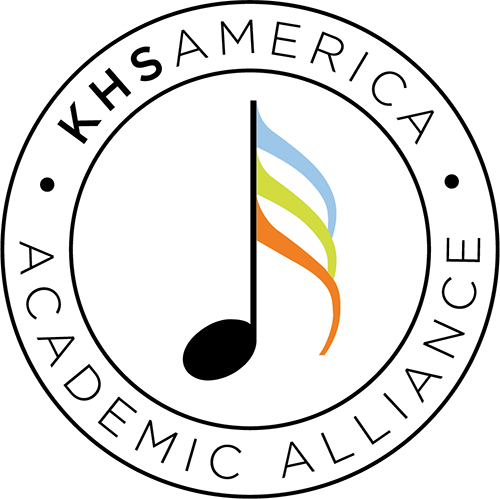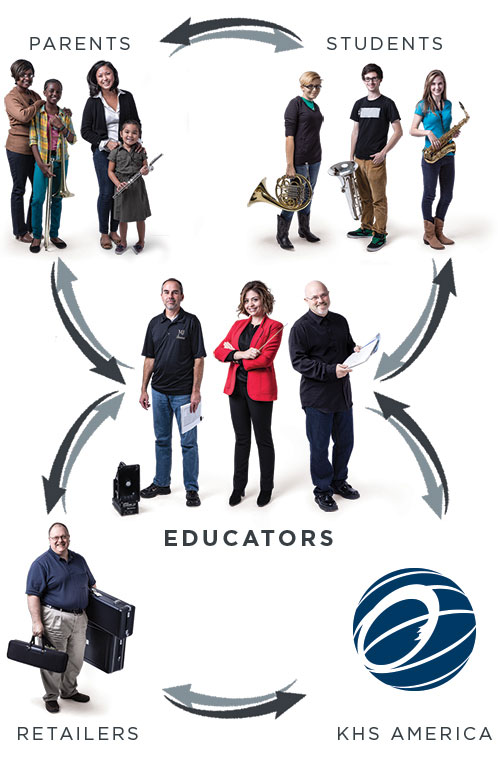We hope you found the viewpoints presented last week by our panel educators to be helpful. If you are taking your first look this week, welcome!
In an effort to provide some additional tools to aid in your success, we have posed questions to educators from across the country; each with different experiences, focuses, and student demographics. We will post new questions and responses each week, so continue to check back.
We also hope that you will contribute ideas born of your own experience by commenting and continuing the conversation. If you have a question you would like to submit, please message us with “Music Ed. Question” as the first line in the question.
Please see the attachment to “Meet the Panel”
My first year is just about to begin. My position is in a low income, Title one school. There are a lot of kids interested in music but the school only has a few instruments. How do I go about finding grants, or is there some “out of the box” ways to teach and include every kid interested?
Lance LaDuke: A quick web search will uncover a number of grants. Crowdsourcing opportunities (gofundme.com or indiegogo.com) may be another possibility, depending on the district guidelines. In terms of “out of the box” thinking, what about a “maker band” where students create their own instruments? There are a number of instruments (ukulele, cajon, didjeridoo, etc.) that can be created and formed into an ensemble. Work with the math instructors to help draw up the plans, the social studies teachers to help develop curriculum that includes the history and cultures associated with the instruments. Look for community groups to help sponsor your efforts. Post your processes online and show off your group. If you need inspiration, search online for “Landfill Harmonic.” Those folks had nothing but drive, a need for expression and a bunch of stuff we would call junk, and turned it into magic.
Dr. Jeff Phillips: Honestly I haven’t had experience in this type of situation, however, I have colleagues that have been very successful being creative in low income situations. Some of the things that they have done are soliciting lessons and tutoring from local university students, partnering with local churches and fraternal organizations for “instrument drives” and donations, and getting students that are currently in the program out into businesses for performances (increases the success of the program and promotes funding opportunities). You may have to have students share instruments in different classes at first, but as the program grows, the success and need should be publicized so that the community can come together and help support the education of their students.
Dr. Russ Gavin: I would encourage you to find a teacher in a similar circumstance and reach out for help! There are a lot of people doing great things in challenging situations. Find a few, reach out, and take good notes!
Ryan Moseley: There are a several resources you can explore to help bring instruments into your school. When looking for grants, contact your local music stores, Fine Arts Councils in your State, local college professors, and even look at your state NafME Chapter or the national NafME website. All of these organizations are great resources to find grants that you can apply for. In addition, there is the national “VH1 Save the Music” foundation and the “National Endowment for the Arts” that could point you in the right place to find grants.
A second option is to put an ad in the local community paper and on your school/district web pages looking for community members to donate used instruments to your school. In addition, talk with your local music store and see if you can work out a deal where they donate their time to repair instruments or repair them at a reduced cost. Tell them what the cause is for and that you will be willing to help promote their store with the parents and students. This makes it a win-win situation for both parties involved.
The content of this Blog article or Banded Story is the intellectual property of the author(s) and cannot be duplicated without the permission of KHS America and/or the author(s). Standard copyright rules apply.


 We look forward to the evolution of this exciting program, and welcome feedback on how we can further enhance the work that you do in music education.
We are excited to offer your program the opportunity to join the KHS America Academic Alliance today.
We look forward to the evolution of this exciting program, and welcome feedback on how we can further enhance the work that you do in music education.
We are excited to offer your program the opportunity to join the KHS America Academic Alliance today.